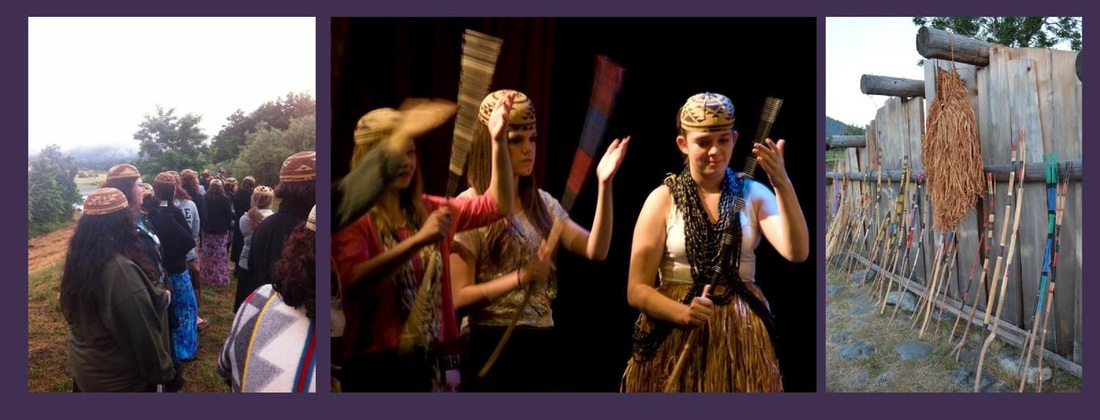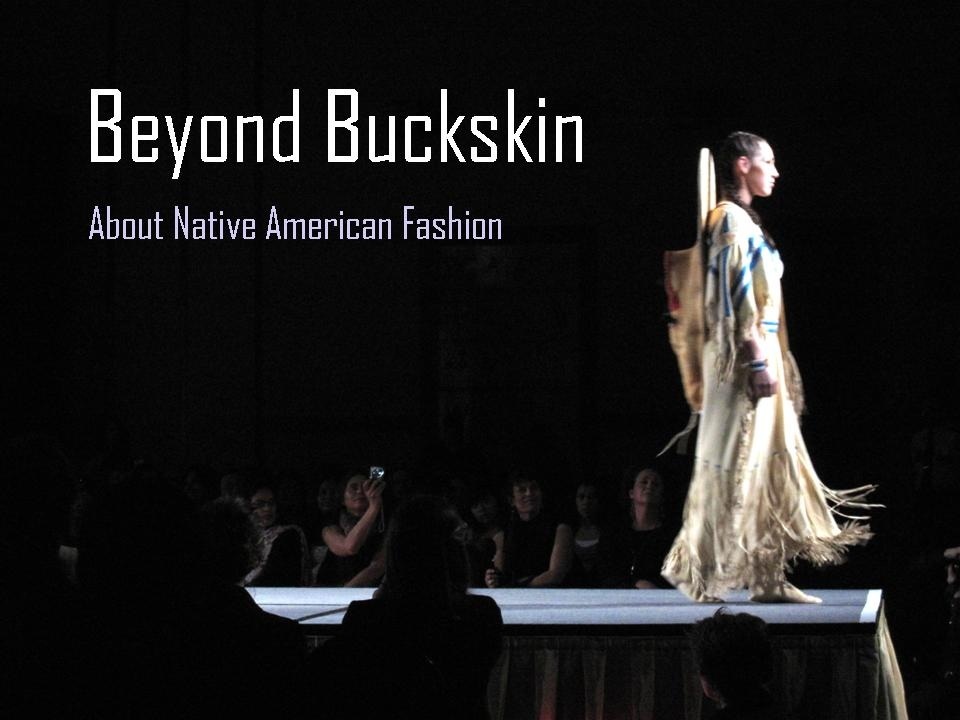|
The following is an excerpt from my in progress book based on research I have been doing for the past few years on the revitalization of women's coming of age ceremonies in Native California. People have been asking "where's the blog?!" And I can only respond "I'm trying to write a book!" So I thought I'd give a sneak preview of what I'm working on and a little bit more info about my academic life and why women's coming of age ceremonies are so important for Native communities. At one time,women's coming of age ceremonies were a public celebrations of a girl’s first menstruation which demonstrated how young women are powerful members of Native cultures and societies and that gender equality is central to Native epistemologies. Prior to invasion by western settlers, the Hoopa Valley Tribe, like many other tribes in Native California, were complex societies where gender roles were egalitarian and spirituality was central to all aspects of life. California's post-invasion history was a genocide aimed at the total annihilation of Native peoples and included systematic attacks on Native women and their coming of age ceremonies. As a result, many Native nations no longer practiced their women’s ceremony. At the start of the new millennium, Native women in many communities throughout California have come together to bring back the ceremony as a way to strengthen their community and promote healing from the issues of exploitation and violence introduced during colonization. As I set out to do research on the revitalization of the women’s coming of age ceremony for my tribe, I was keenly aware that I wanted my research and study to focus on the impacts of this ceremony and demonstrate how it (re)writes, (re)rights and (re)rites who we are as Native people. In my own community, the Flower Dance has been an important method of healing for our people. It not only helps young women to build a foundation for their futures, but it has inspired older women, men and young boys to change how they regard the young woman of our community. In regards to writing what will become part of the historical record, and a testimony to the contemporary experience and autonomy of Native people, I wanted to help tell a powerful story about women, about California Indian women, and how California Indian people can continue to build their futures with the cultural and spiritual foundations from our First People and our ceremonies. It was for this reason I focused not only on rigorous scholarly research of archival, ethnographic materials, but also on informed community based research that does not treat decolonization as “metaphor” but articulates a tangible means by which to decolonize Native communities so that they can be healthier, vibrant peoples (Tuck & Yang). I foregrounded interviewing the women who were tied to this revitalization, although there were men who are important to the praxis and (re)vitalization of this ceremony as well. I have personal relationships with all of the women who I interviewed. Melodie George-Moore is a medicine woman for the Hupa people, mother and teacher, my relative, and close friend of my mother. Lois Risling, my mother, is a Hupa elder, trained medicine woman, and educator. The young women who agreed to be interviewed included Kayla Rae Carpenter, Natalie Carpenter, Alanna Lee Nulph, Melita Jackson, and Deja George. Together they span the first ten years of this revitalization in the Hoopa community. Each of the women agreed to and were excited about utilizing their real names in this research, something that I found poignant and important to respect, because of how proud they were to be tied to this revitalization. The following is an excerpt from the final chapter of my book... xoq’it-ch’iswa:l (on her- they beat time; a Flower Dance is held for her) The revitalization of the Hupa Women’s Coming of Age Ceremony As I have continued to participate in Flower Dance ceremonies it has become very clear to me that the resurgence of the Flower Dance is a tangible, physical, spiritual and communal act of decolonization. This aspect of the dance was reflected by Hupa medicine woman Melodie George-Moore as well. For her, the dance is about empowering women, because of how colonization targeted Native women. [The Flower Dance is] a very powerful nod to what women bring to their tribe. Especially powerful seeing as colonization, and for some tribes up to 500 years of colonization, it’s amazing to see when they come to watch what they experience… decolonization, I would say, at a very basic level; at a very biological level. We are celebrating menstruation. I don’t care what you think of it, this is what we think of it (George-Moore) The Flower Dance supports an Indigenous decolonizing praxis by enacting Indigenous methodologies that center on ceremony to counteract the impact of settler colonial ideologies of gender, history, and spirituality. The women who helped revitalize this dance believed it was the loss of the Flower Dance that contributed to the struggles facing the women of the tribe and that the performance of this ceremony would create a community of women who could provide support to each other and to the young girls. TI think that it’s an important part to keeping the balance in our community, in our spirituality, basically in all the areas of our lives. ...There’s a lot there that sort of keeps that balance within our tribe, male and female (Carpenter, K).  Part of (re)building this community came from the resurgence of songs and singing among women. Some of the older women who participated in the ceremony were singing for the first time. Younger women were coming together with older women to teach each other songs and talk about their role in the ceremony. Some women created song groups, who specifically came together to make up new songs, bringing new life to the ceremony. In these song groups many of the women were afraid at first of singing but were encouraged by those older women who remembered when women “sang out.” In this respect, the personal journey of the women was reflected in their journey of learning, creating and singing a song in the ceremony. As Melodie George-Moore reflects: There’s other things happening here, like the five generation first time dancers, all of them first time, one time, singing together for the first time ever. Wow, I can’t top that- five generations of women singing together at one time. That’s the ultimate, that’s the ultimate decolonization that happens (George-Moore). The revitalization of the dance, therefore, has provided a very poignant methodology for addressing these issues of gender and societal imbalance and the introduction and adoption of a misogyny into Hupa cultural practices and epistemologies. Alanna Nulph notes that what she learned in her Flower Dance was that in Hupa culture and society women are very important in all aspects of the culture and that the Flower Dance ceremony speaks to that importance. [In Hupa culture] women own a lot of property and regalia and did a lot of the work, they are acorn eaters and who gathered all the acorns? Women! And who weaves all the baskets? The women, with exceptions sometimes you know. Who cuts up the fish? Who drys the fish? The women. So women are important just as the same as men are important in the bigger dances, you need something to celebrate women or else women will get mad at you and you don’t want angry women in your society (Nulph). Lois Risling explains that this dance has helped men to “look at women in a different light.” When you dance over somebody and celebrate somebody you don't think of them just as a piece of meat or just as some kind of sexual object. Which is kind of ironic, because that’s not how the miners thought, the miners thought the opposite of [Native women], just as them being a sexual object. But I think if you’ve danced with somebody, you've said prayers over somebody, you begin to think of women in a different way. And this is I think really important for our society because we have been oppressed and we have been told that women, from Christian American morals, we’ve been told that women are not equal to men and they’re not in the same position that men are in. But this ceremony definitely shows that women are important to the society and play a very important part in it (Risling). As Hupa medicine woman Melodie George-Moore reflects on the impact of this dance she focuses intently on how each of these young women, and all of the people who have become a part of a the Flower Dance community, are able to utilize the positivity of this ceremony against the many issues that still face the Hupa people. The dance, and it’s public celebration of young women, contributes to a community healing, not just an individualized experience on the part of the kinahłdung. I think we’re making a dent in, or building and holding space against, negativity. There’s a lot of negative things in this world. Especially in the modern world. In the modern Hupa world there is a lot of negative things that are cause for concern and I think we’re holding space against that with this dance. …I thought (we were only) giving the girl armour but in fact what we’re doing is a lot larger than that not just for the girl but for other people who come to participate (George-Moore). Other ResourcesBlue Jay Sings-- The Revitalization of Women's Coming of Age Ceremonies and making Blue Jay Veils by Cutcha Risling Baldy (Hupa, Karuk, Yurok)
Presentation on Flower Dance revitalization begins at 57:21 in below video.
0 Comments
Your comment will be posted after it is approved.
Leave a Reply. |
SubscribeClick to
AuthorCutcha Risling Baldy is an Associate Professor and Department Chair of Native American Studies at Humboldt State University. She received her PhD in Native American Studies from the University of California, Davis. She is also a writer, mother, volunteer Executive Director for the Native Women's Collective and is currently re-watching My Name is Earl... (5) Top PostsOn telling Native people to just "get over it" or why I teach about the Walking Dead in my Native Studies classes... *Spoiler Alert!*
Hokay -- In which I lead a presentation on what happens when you Google "Native American Women" and critically analyze the images or "Hupas be like dang where'd you get that dentalium cape girl? Showing off all your money! PS: Suck it Victorias Secret"
In which we establish that there was a genocide against Native Americans, yes there was, it was genocide, yes or this is why I teach Native Studies part 3 million
5 Reasons I Wear "Indian" Jewelry or Hupas...we been bling-blingin' since Year 1
Pope Francis decides to make Father Junipero Serra a saint or In Which I Tell Pope Francis he needs to take a Native Studies class like stat
I need to read more Native blogs!A few that I read...
Archives
June 2020
Categories
All
|







 RSS Feed
RSS Feed
